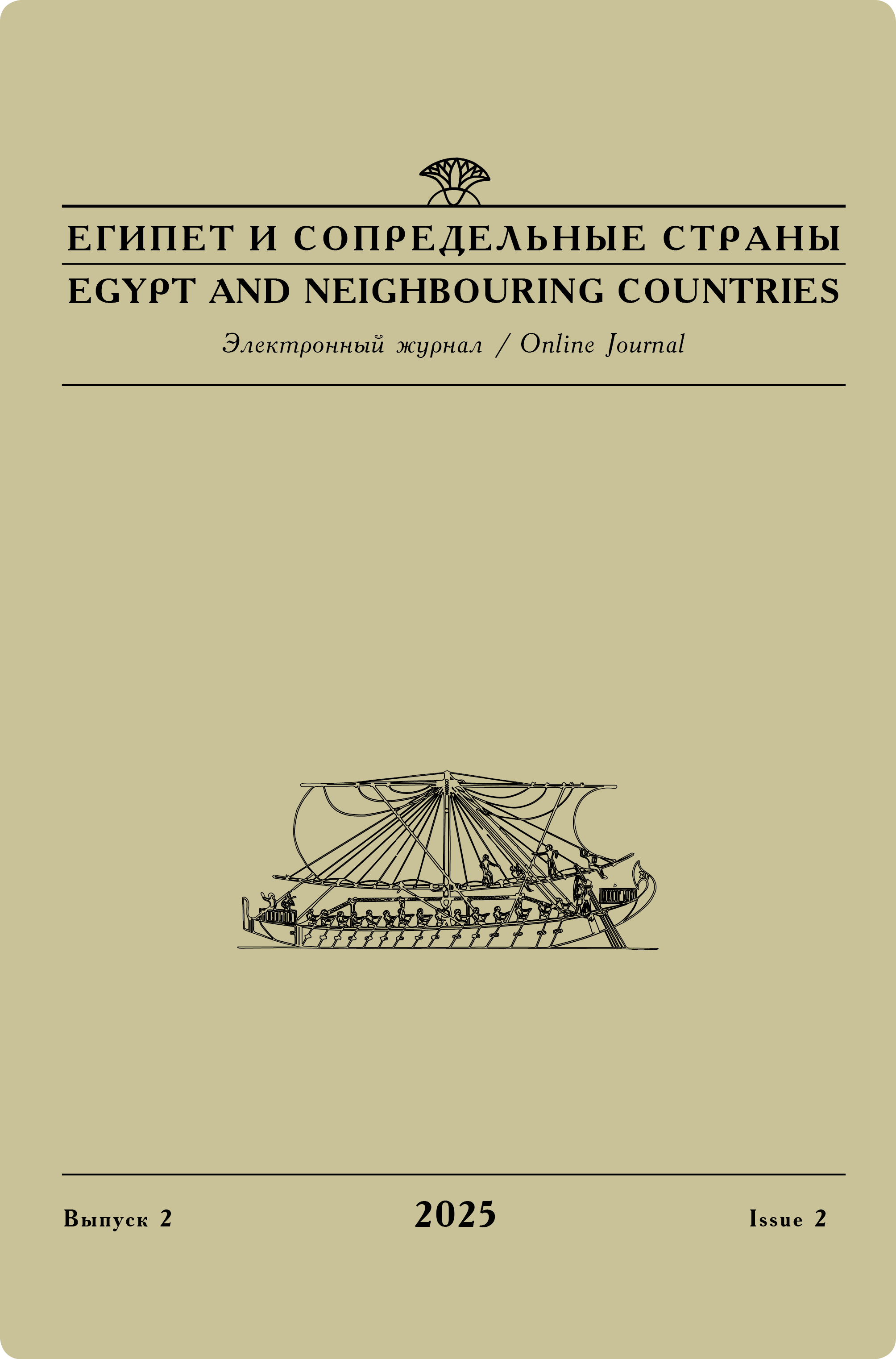Issue 1, 2024
V. А. Bolshakov
Ekhnaton i Nefertiti – novaia bozhestvennaia para? K voprosu ob interpretatsii obraza tsarskoi chety [Akhenaten and Nefertiti — a new divine couple? On the question of interpretation of the image of the royal couple]
The article discusses the question of the royal couple’ theological role in the context of the religion of the Amarna period. The dominant interpretation in Egyptology suggests the existence in the Amarna theology of a new divine triad Aten–Akhenaten–Nefertiti, organized according to the model of the old Heliopolitan triad of the primeval gods Atum–Shu–Tefnut. In accordance with this point of view, Akhenaten and Nefertiti were identified with the children of the solar god (Aten) – the twin gods Shu and Tefnut. The author focuses on examination of the theological role of the royal couple as the manifestation of Shu and Tefnut, and in particular on the hypothetical assimilation of Nefertiti with the goddess Tefnut as a female “counterpart” to the king as Shu. As the study of visual and written sources of the Amarna period shows, the thesis about the equivalence of the roles of the king and queen in the Aten–Akhenaten–Nefertiti constellation does not stand up to criticism. Moreover, it should be concluded that in the Amarna religion, the great royal wife was only a secondary figure and acted only as a necessary theological complement to Akhenaten, personifying not a specific goddess, but the feminine divine principle in general.
Keywords:
Akhenaten, Nefertiti, Shu, Tefnut, Egyptian religion, Amarna theology.
Original language — Russian.
DOI: 10.24412/2686-9276-2024-00002.
Referring: Bolshakov V. А. Akhenaten and Nefertiti – a new divine couple? On the question of interpretation of the image of the royal couple [in Russian] // Egypt and neighboring countries 1 (2024): 44–58. DOI: 10.24412/2686-9276-2024-00002.
Read full article




